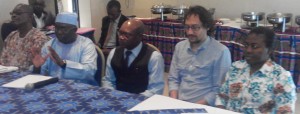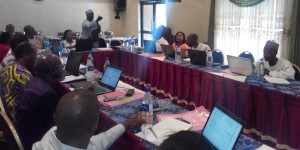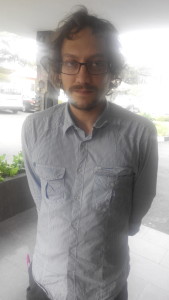Nigeria may be spearheading an initiative on the African continent that would accurately measure the level of forest carbon stocks, and reap handsome financial reward.

Under the United Nations-supported Reducing Emissions from Deforestation and Forest Degradation (UN-REDD+) programme in respect of which the country is implementing a Readiness phase, communities are encouraged to leave their forests standing in the belief that trees act as carbon sink and thus mitigate the effects of climate change.
In the United Nations Framework Convention on Climate Change (UNFCCC), the potential benefits for non-Annex I parties are be based on results that must be measured, reported and verified (MRV). The precision of these results therefore has a major impact on potential financial compensation, and the capacity to measure forest carbon stocks is thus of increasing importance for Nigeria that is mitigating climate change through her forest activities. The measurement of these stocks currently calls on techniques that are applied at different scales such as field inventories on a local scale.
Forest carbon stock measurement at some point needs trees to be weighed in the field, constituting the keystone on which rests the entire edifice of forest carbon stock estimations. Allometric equations are used to predict the biomass (diameter or height) of a tree, and considered a key factor in estimating the contribution made by forest ecosystems to the carbon cycle.

Guidelines have been provided by scientists towards ensuring the construction of these equations to countries that are not yet in possession of measurements and equations that match their forests. It is believed that virtually all African countries fall in this category.
But Nigeria has begun moves to develop her equations in the bid to provide accurate and credible information on her forest stock. At a recent forum in Calabar, Cross River State, local and international experts gathered to fashion out a way to make this a reality.
“Most of the equations we are using in Africa come from models that were developed in Europe. There is virtually nowhere that you see Allometric equations with an African formula. So Nigeria is spearheading this and trying to develop its own equation that will be used to measure its own forest,” says Salisu Dahiru, National Coordinator of Nigeria’s UN-REDD+ programme.
Describing the system being utilised by the UNFCCC as “default model”, Dahiru adds: “For instance, you have Iroko tree, locust bean tree, and many indigenous trees here but we are only using models of forest that does not represent the kind of forest that we have and enable you make adjustments. But if you do your own, it gives you more accurate data and information on the forest, rather than using models developed elsewhere. The process is not novel, but the fact that we are applying it is novel, to suit Nigeria’s forest. To the best of our knowledge, there are no Allometric equations for forests in Africa.”
Dr John Fonweban, Forestry Officer, UN-REDD Programme, Food and Agriculture Organisation (FAO) office for Africa (FAORAF), submits: “When you are talking about carbon, you need to quantify that; you need to quantify what you have. But if you can’t do that, then there is a problem of credibility and that is the reason why Nigeria will have to go that way to be able to quantify and show scientifically and in a transparent manner that this is what we have, this is what models we’ve used to have that. That is where the credibility comes.

“That is even where most of the negotiations will be because you can’t go to the market to sell something when you don’t know how much you have. So you need to quantify the stuff and Nigeria should be able to do that. The other thing is that if Nigeria has to show performance in her REDD+ or reduction of emission process, and at one stage in time they should be able to have what is called a reference level that requires very good and accurate information. It requires this model that is very crucial for Nigeria and I think that they are ready for that.”
Luca Birigazzi, Forestry Expert, UN-REDD Programme, describes biomass assessment as a component of the MRV process.
Describing the gathering as a good representation of stakeholders, he stresses: “It’s a challenging process. There is a lot of potential in REDD+ and I hope it will bring something positive to Nigeria in particular and the world as a whole.”
According to Dahiru, if the emission reduction can measured, reported and verified, the country can benefit from the carbon credit trading process. He adds that it also helps to determine how much emission the country is reducing by implementing REDD+.
His words: “So MRV is a prerequisite for you to even trade on carbon. In terms of what you are getting, it means that you are putting yourself in a position to fast track the carbon process in Nigeria. What we are doing is putting the power to do this in our own hands and determine our own destiny. Everything we are doing is towards reducing emission of the gases that are responsible for global warming. The arrangement now is that if you can demonstrate that you have made some savings, you are now emitting less, then that difference is calculated in terms of tons of carbon dioxide and quantified in terms of dollars for each ton of carbon.
“For REDD, you have a stage called result-based payment stage where if you say you have reduced emissions then somebody will need to see how much of these emissions you have reduced. That is the measurement. The government, communities and civil society do the measurement and it is compulsory for you. If you want to be paid carbon credit, you must report that to the UNFCCC and, for it to be actualised, independent verification must be done. The UNFCCC has its own independent verifiers.
“You as government if you like you can participate in the verification, but in-country (on the ground) you have to involve the civil society and communities to help verify because they have a stake in the carbon credit that will be shared. So, the whole process is done in a transparent manner; everybody that has a stake in it is allowed to participate so that it ensures credibility and nobody will complain at the end of the day. Once you are satisfied with these three conditionality, the certificate that is going to be issued to you will now be taken to the stock market, which is the carbon market, and traded upon.”
By Michael Simire
